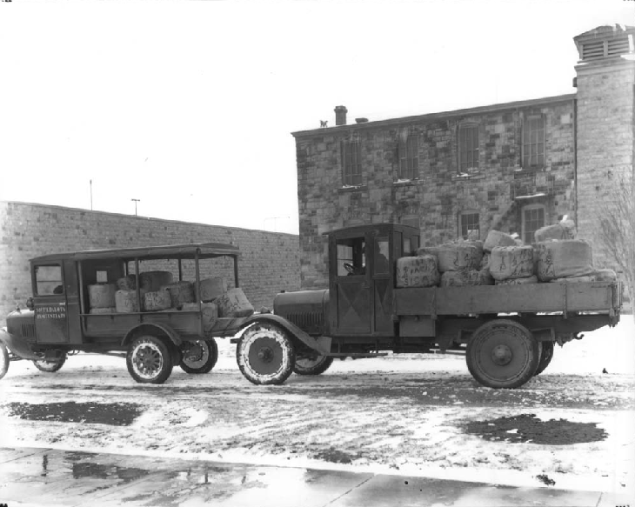
In the early 1900s, crop production relied heavily on binders that used twine, especially of henequen and sisal, for containing harvested grain. Henequen and sisal came from the Yucatán Peninsula. In 1909, the South Dakota State Penitentiary started a factory to produce twine. The decision was made, under Warden Ole S. Swenson’s tenure, to provide low-cost twine manufactured under prison labor. Despite many ups and downs due to crop production, the penitentiary produced twine until 1950.
This 1929 photograph shows two trucks laden with twine bundles. The front truck reads “South Dakota Penitentiary” on the driver’s side door. The buildings in the background are the penitentiary. Overall, for many years the prison successfully produced twine, “en-twining” the inmates in an endeavor that helped many farmers in the area.

